As a young girl interested in archaeology and history, mummies always intrigued me. From the intricate Egyptian mummies to the naturally and beautifully preserved mummies of the Incas, they seemed to me to be beautiful pieces of art containing secrets of the ancient past. So imagine the disappointment I felt, when at the tender age of eight, I realised that the Persians did not have any mummies! Actually very few human remains have been found in the Iranian Plateau. The Royal Achaemenid tombs in Naghshe Rostam yielded their treasures and human remains many centuries ago. The Sasanians and the Achaemenids for that matter, made funerary archaeology a bit more difficult by practising the Zoroastrian mortuary rituals, which left very little or no human remains to be studied by archaeologists.
Now and then a chance discovery of a “Royal Persian Mummy” would hit the news, and of course later would turn out to be a fake. The most famous of these is the “Royal Princess-Mummy” thought to be a daughter of Xerxes, this particular mummy was on sale on the black market for about 11 million dollars! But of course this “amazing find”, which was thought to be the Tutankhamun of the Achaemenid Empire, almost lead to an international incident involving Iran, Pakistan, and even the Taliban in Afghanistan. All this was more or less due to the curator of the National Museum in Karachi, where “the Royal Princess” was being held and stored. Being overwhelmed by this find of the century, Asma Ibrahim thought she could read the cuneiform inscriptions on the mummy's gold plaque herself, ordered numerous CT scans, and also assisted in its autopsy. However, she forgot one key fact. There are no records nor evidence that the Achaemenids, who followed an early type the Zoroastrian faith, would want or need an embalming according to the Egyptian ritual customs. (The only remote mention of a possible embalming in ancient Persia is from Herodotus, who mentions that the Persians embalmed their dead in wax. Hdt 1.140) Also the pencil marks around the wooden embellishments on the coffin should have given her a clue. The 2600 year old “Royal Princess” turned out to be a woman with dyed blond hair, who had died by having her neck broken in 1996 CE. This poor, middle-aged woman was either a victim of grave robbery or was murdered in a “mummy factory” somewhere between Iran and Pakistan.
After this disappointment, I came across “The Iranian Saltmen”, and I was pleasantly surprised. The “Saltmen of Zanjan” were preserved by a very rare form of natural mummification which had occurred in a salt mine.
In 1993 CE miners in the Douzlakh Salt Mine, near Hamzehli and Chehr Abad villages in Zanjan Province, accidentally came across a mummified head. The head was very well preserved, to the extent that his pierced ear was still holding the gold earring. The hair, beard, and the moustaches were reddish in colour, and his impressive leather boot still contained parts of his leg and foot.
The local Zanjan branch of the Miras Farhangi (Zanjan Cultural Heritage, Handicrafts and Tourism Organisation) was called, and they performed a rescue excavation and found three iron knives, a pair of short trousers made of wool, a silver needle, a sling, a leather rope, a grindstone, some pottery shards, patterned textile fragments, a few broken bones, and even a walnut. He was found in a middle of a tunnel, about 45 metres in length.
The local Zanjan branch of the Miras Farhangi, thinking that this mummy was an individual find, did not investigate the mine any further. However, in 2004 CE the miners discovered yet another “saltman”, and again the local Zanjan branch of the Miras Farhangi was called in. The team discovered further remains of a human body along with a large number of artefacts made of wood, metal tools, clothing, and pottery.
The Miras-e-Farhangi, realising that they might have stumbled upon a mine with a long history of usage, finally got their act together, and started an archaeological investigation, involving several international research organisations:
- Iranian Centre for Archaeological Research (ICAR), Shiraz, Iran
- Ruhr-Universität Bochum
- Universität Zürich, Zentrum für Evolutionäre Medizin
- University of Oxford, (RLAHA Oxford), Research Laboratory for Archaeology & the History of Art
- York University, Institute of Archaeology
- Tehran University, The Institute of Parasitology and Mycology
- Zanjan University, Institute of Geomorphology
- University of Franche-Comte, Faculty of Sciences & Techniques
In 2005 CE a systematic excavation began, three more mummies were excavated, and a sixth remained in situ, due to lack of funds for its storage. The context of the remains suggested that a collapse in the mine had caused the death of the miners in question.
The first mummy, dubbed the "Saltman", is on display in the National Museum of Iran in Tehran. He still looks very impressive, I just wish he was displayed a bit better.
This particular "saltman" was originally dated based on the archaeological material found with him. Sobuti, the Iranian archaeologist who performed the first rescue excavation, suggested a date of around 800 BCE based on the clothing and the accessories found with him, which placed him in the Neo-Elamite Period (1000-539 BCE). Later, the mummy was carbon dated, which placed him in 500 CE (1750 BP, that is, "before present" or 1750 years ago), the height of the Sasanian Empire. The second "saltman" was carbon dated to 1554 BP, which placed him in the same era as the first "saltman", the Sasanian era.
The third, fourth, and the fifth "saltmen" were also carbon dated. The third body was dated and placed in 2337 BP, the fourth body in 2301 BP, and the fifth mummy was dated to 2286 BP, placing them all in the Achaemenid period.
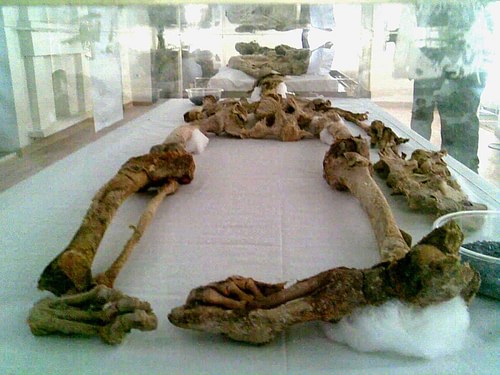
However, the previous number of five has since increased to at least 8 individuals. As the further anatomical analysis revealed that the bones previously thought to have belonged to one individual belonged to several more.
The isotopic analysis of the human remains revealed where these miners were from. Some of them were from the Tehran-Qazvin Plain, which is relatively local to the mine's locality, while others were from North-Eastern Iran and the coastal areas around the Caspian Sea, and a few from as far away as Central Asia.
Furthermore, the archaeozoological finds, such as animal bones found within the context of the saltmen, showed that the miners might have eaten sheep, goats, and probably pigs and cattle, as well. The archaeobotanical finds recorded showed different cultivated plants were eaten, indicating an agricultural establishment in the vicinity of the mine.
The wealth of fabric and other organic material (leather) worn by the saltmen have allowed a thorough analysis to be undertaken, detailing the resources used to make the fabrics, the processing, the dyes used to colour the fibres of the garments, and not least they offer an excellent overview of the changes in cloth types, patterns of weaving, and the changes of the fibres through time.
All the data collected so far has allowed the researchers to have the first holistic view of the mine and the miners who worked there through the periods of its usage. The variety of the artefacts and the ecofacts found in each stratigraphic and chronological setting has offered a concise context, hence revealing the differences between the two ancient mining phases.
During the Achaemenid phase, the mining area was accessed from areas further away, indicated by the lack of settlement in the vicinity of the mine, and the presence of foreign miners as indicated by the DNA results from some of the salt mummies. The high number of ceramic vessels and goods supplied also suggest access from further away, while the Sasanian phase shows that the mining was established within the local landscape, and the isotopic data indicates that the supplies were organised on a regional basis.
It is also very interesting to take the lack of any archaeological evidence of any form of a mining settlement within the vicinity of the mine into account, which indicates that the mining was seasonal rather than highly organized. For instance, if we look at the contemporary Greek mining practice by contrast, this was often a task done by slaves and was highly organised.
The individual "Saltmen" have a few secrets of their own, for instance the first "saltman" that was discovered had the blood type B+, and 3D imaging of his skull revealed fractures around his eye and other damage that occurred before death by a hard blow to the head. His clothing (the impressive leather boot) and his gold earring, show a person of some rank; the reason for his presence in the mine still remains a mystery. Was he murdered and dumped there, or was he mining salt and fell victim to a cave in?
Saltman No. 5 had tapeworm eggs from the Taenia sp. genus in his system. These were identified during the study of his remains. The find indicates the consumption of raw or undercooked meat, and this is the first case of this parasite in ancient Iran and the earliest evidence of ancient intestinal parasites in the area. The best preserved and probably the most harrowing of the saltmen is Saltman No. 4. A sixteen-year-old miner, caught in the moment of death, crushed by a cave-in.
For a while it seemed that the four "Saltmen" displayed in the Rakhtshuikhane Museum in Zanjan were in danger of becoming damaged by bacterial infection. The display cases were not sealed properly and were allowing air to enter. Hence there was some damage to the internal organs of some the mummies. However, the Iranian press and the Zanjan Cultural Heritage, Tourism and Handicrafts Dept. director later reported “Without hesitation, I can now say that the salt men kept here are in better condition than the one at the National Museum of Iran in Tehran.” Three cases were made especially for the Saltmen, costing about $25,000 each. The cases are equipped with devices which enables experts to monitor conditions inside and keep them under full control.
The wealth of knowledge these five mummies and the associated finds have brought and are still bringing in understanding Ancient Iran is truly invaluable, and I do hope one day further excavations can be carried out in this mine, so that further discoveries can come to light.
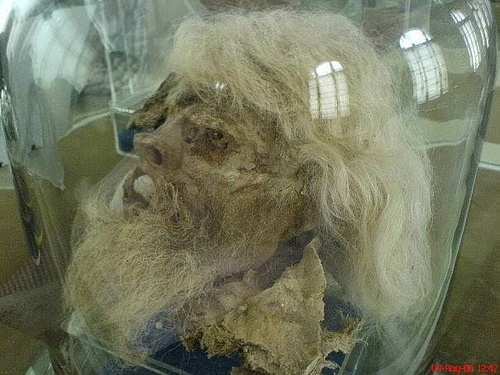
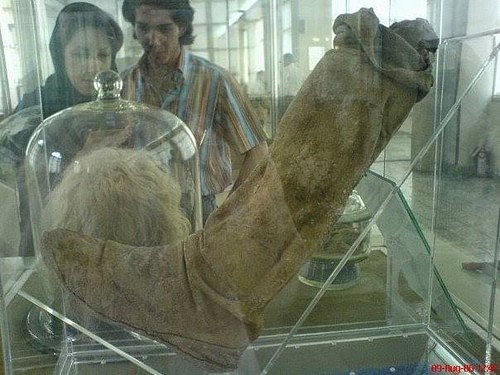
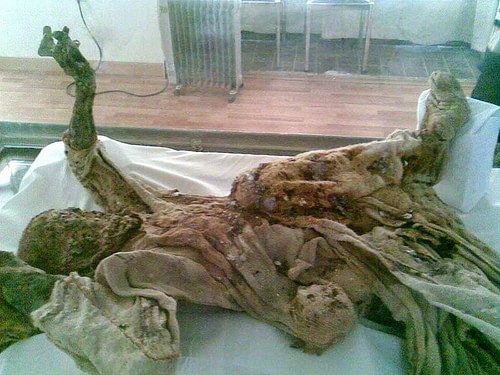
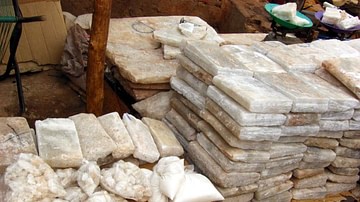
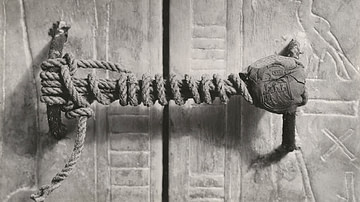
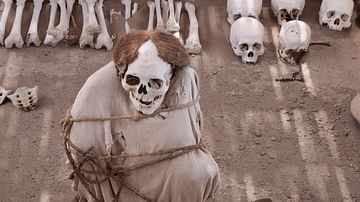
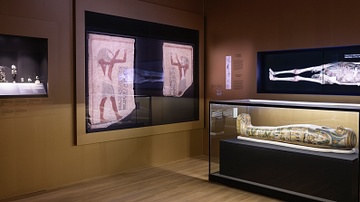
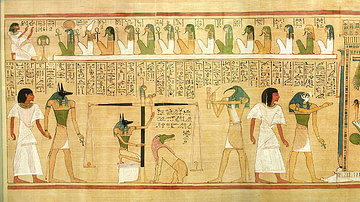
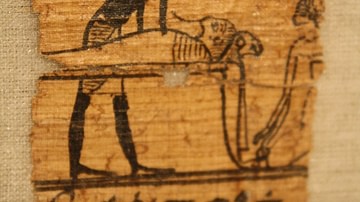





 This content is provided by
This content is provided by